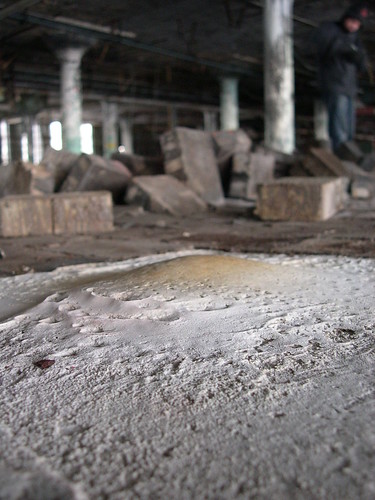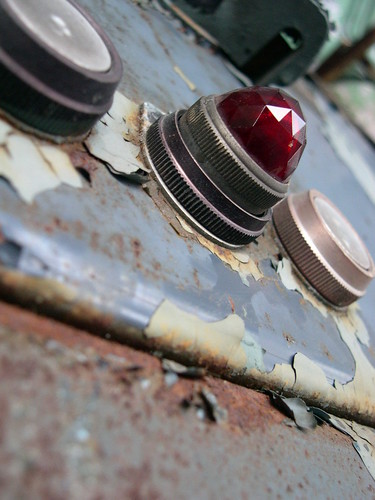
third floor
I only have the most positive things to say about my experience with couchsurfing.com. It is little things like that service and the people who use it that restore some semblance of faith in humanity, and really helps to counter cynicism and amplify the idea that people are generally good, interesting, and open to new things and adventure. Meeting completely random people with frighteningly similar interests and experiences (although different enough to make conversation quite stimulating) reassures you of the fact that there are infinite pages of one's own history yet to be written. Chance meetings and strange convergences of time and place really underscore how excellent things are.
It makes me a bit sad for all the people who had knee-jerk reactions like "OMGWTF they could soooooooooo kill you!!!11!!," I can't imaging living a life paranoid most new people and places. There is risk in everything, but the rewards are much greater than those gained from rotting in front of your television. (Though sitting in a warm house curled up in front of a glowing box [fireplace substitute?] sound's REALLY excellent right now. Urban exploring in the winter is more healthy from a lack of mold standpoint...but that 12-15 degrees bit is pushing it for my taste.)
Yesterday the Folks I met from couchsurfing had just come from exploring the Studebaker Plant in South Bend, Indiana. They came with some incredible shots - although the architecture looked stunningly similar to Detroit's Packard Plant, what made it appear so strikingly different from the Packard (or any Detroit building for that matter) was how intact the contents of the building were. Little or nothing was scrapped. The heavy, metal positive molds for car doors - the piece that the massive stamping machines would pummel the sheet steel onto (pardon my lack of technical terms) - were still scattered about. What looked like fields of hundreds (Thousands?) of car engines were still intact, in neat rows, fan blades eerily pointing the same direction. Paper ephemera still in boxes, everywhere. Algebraic figures on whiteboards still proclaming their pale red and green calculations.
At its peak, the South Bend Facility alone employed more than 22,000 workers and produced as many as 35,000 automobiles and trucks per month. Built in the late 1890s had many uses over the years. It first housed ne of the original Studebaker wooden wagon assembly lines. In 1922, the building was renovated for making automobiles. The company closed in 1963.
On the matter of there being no coincidences...I'm so glad that the building was well documented, just today it was announced in the Indiana Star that the former Studebaker Plant is being razed. A ceremony is planned before demolition work begins sometime in January. Nice timing.
Anyway, enough hippie chatter. On with the pictures. We had been through Fisher Body 21 last Spring with the Alice in Wonderland Absurdists, so this was my second trip to the building, but I was the only one who had ever been before...and we all know how useful my sense of direction is...heh. But we were fine and found the appopriate entrances and stairwells pretty quickly, once somewhat stealthily passing one of the building's winter residents who had quite the little campfire set up. I'm not sure what he was burning, but it didn't smell all that great, so we decided it best to head right up to the uppermost floors to escape the smoke of unknown composition that was lingering around the first and second floors.
Entire set here
This time I concentrated on the textures and architectural details a bit more than usual, as it was less about the feeling of "adventure" and need for total documentation you get from first time encountering an unexplored structure. We still discovered many new places, but the overall feel was somewhat familiar so I was able to relax intot he art of the space. Since it was already past 4pm and very overcast, natural light was at a premium and the "found tripod" method was full in effect, meaning I was almost always crouched on the floor with my ass in the air, balancing my poor little camera right on the ground or a piece of rubble.
Fifth Floor:

Sixth Floor:






A little history: "The story of Fisher Body 21 began when brothers Fred and Charles Fisher founded the Fisher Body Company in 1908. Fisher soon became the industry standard and as orders came in from Detroit's auto manufacturers, Fisher expanded. For the first two decades Fisher's production facilities would be centered in Detroit in an area east of Woodward and south of Grand Boulevard. It would be in this area that the Fisher Body 21 plant rose in 1919.
Located at the corner of Hastings and Piquette Ave, just east of Woodward, Fisher Body 21 was just one of 40 buildings used by the company. By 1926 there was 3.7 million square feet of floorspace. Fisher Body 21, measuring 200 feet by 581 feet only accounted for 536,000 square feet of this total. The six story stucture was built with reinforced concrete in a manner developed by Albert Kahn.
Fisher Body 21 was built to house a body assembly plant. Between 1919 and 1925 it produced bodies for Buick and Cadillac. After Buick moved to Flint it continued to produce Cadillac bodies until becoming an engineering facility in 1929. The building continued as an engineering facility until 1956 when it again was pressed into production. This time around production centered around Cadillac limosine bodies. It continued in this service at least until 1974. The building's last use was in the mid-1990s as Carter Color." Fisher Body history text copyright 1999 - 2005, David Kohrman - Forgotten Detroit.

3 comments:
Well done!
[url=http://odvcvpqo.com/xzuu/vimk.html]My homepage[/url] | [url=http://oiwnqahr.com/brdz/gpbb.html]Cool site[/url]
Well done!
My homepage | Please visit
Good design!
http://odvcvpqo.com/xzuu/vimk.html | http://czdanwag.com/zcij/qntp.html
Post a Comment